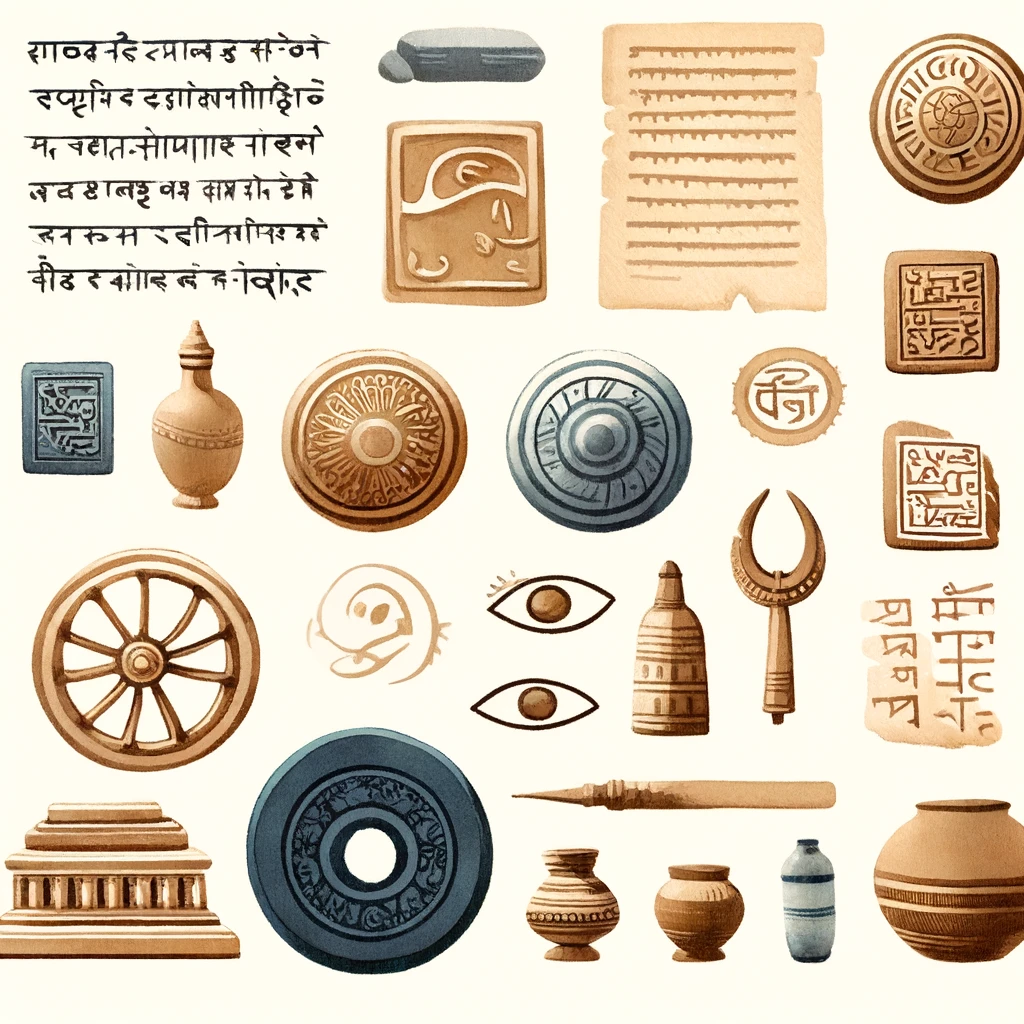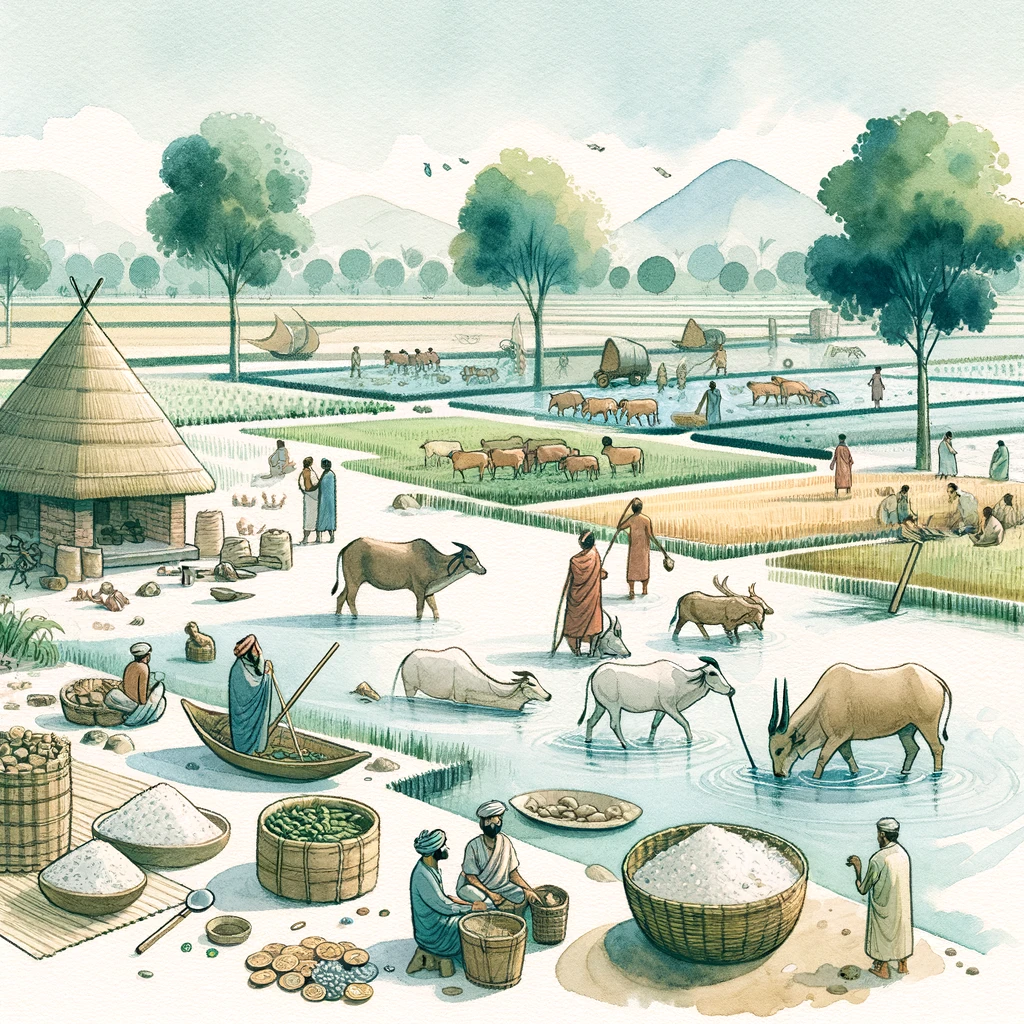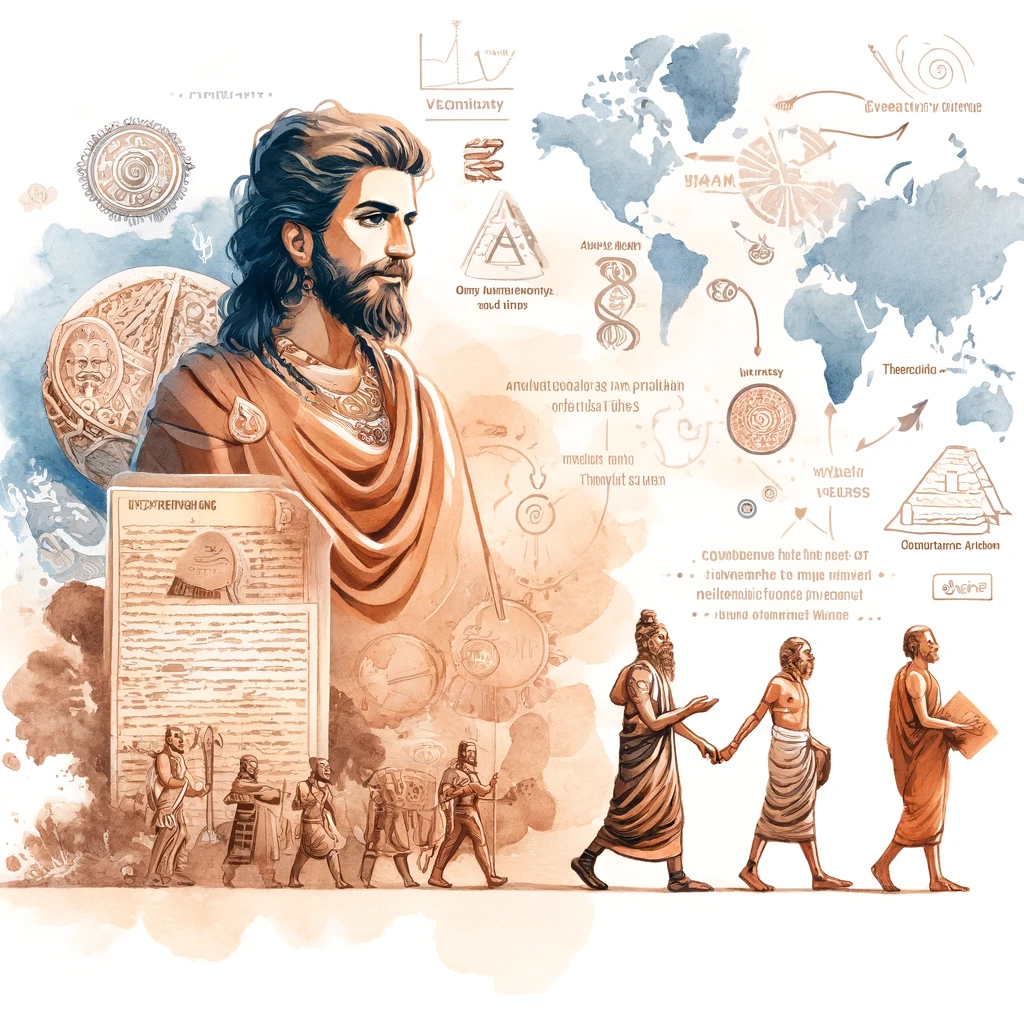The Indus Valley Civilization (IVC), which flourished around 2500 BCE in the northwestern regions of South Asia, is renowned not only for its urban planning and economic prowess but also for its rich cultural heritage. The cultural aspects of the IVC encompass its script and language, religion and beliefs, and its distinctive art and architecture, particularly seen in its seals and pottery.

Script and Language
Script
One of the most intriguing aspects of the Indus Valley Civilization is its script, known as the Indus script.
Characteristics:
- The script consists of symbols, many of which appear on seals, pottery, and other artifacts.
- It comprises about 400 distinct signs, which are often combined in various ways, suggesting a complex writing system.
Undeciphered Script:
- Despite numerous efforts, the Indus script remains undeciphered. This has left many aspects of the Harappan language and communication methods a mystery.
- The inability to decipher the script means that our understanding of Harappan society, governance, and daily life relies heavily on archaeological evidence rather than textual records.
Writing Mediums:
- The script is found in a variety of mediums, including seals, pottery shards, tablets, and even copper tools.
- In addition, the use of durable materials suggests that the Harappans valued the preservation of written records.
Language
Hypotheses:
- There are various hypotheses regarding the language spoken by the Harappans. Some scholars suggest it might have been a Dravidian language, while others propose a relationship with early Indo-European languages.
- The exact nature of the language remains speculative due to the undeciphered script.
Religion and Beliefs
Religion
The religious beliefs of the Indus Valley Civilization are inferred from archaeological findings, as there are no decipherable texts that describe their religious practices.
Deities and Worship:
- Terracotta figurines of what appear to be mother goddesses suggest the worship of a fertility deity.
- Seals depicting animals, such as the famous “Pashupati” seal, which shows a figure seated in a yogic posture surrounded by animals, suggest the worship of nature and animals. This figure is often associated with a proto-Shiva deity.
Rituals:
- The Great Bath at Mohenjo-Daro indicates the possible significance of ritualistic bathing in their religious practices. This structure suggests a communal or religious function, potentially for purification rites.
Symbols and Icons:
- Various seals and artifacts display symbols such as the swastika and tree motifs, indicating their symbolic and possibly religious significance.
Burial Practices
Cemeteries:
- Several burial sites have been excavated, revealing different burial practices, including extended and secondary burials.
- Grave goods, such as pottery, beads, and personal ornaments, suggest a belief in an afterlife, where such items might be needed.
Cremation Evidence:
- Some sites indicate possible evidence of cremation, but this is less well-documented than inhumation practices.
Art and Architecture of Indus Valley Civilization
Indus Valley Civilization Art
The artistic achievements of the Indus Valley Civilization are evident in their seals, pottery, figurines, and other artifacts.
Seals:
- Seals are among the most distinctive artifacts of the IVC, typically made of steatite, a type of soft stone. They were used for trade, identification, and possibly for religious or administrative purposes.
- The seals often feature intricate carvings of animals, human figures, and possibly mythological creatures. They also include inscriptions in the undeciphered script.
- Common motifs include the unicorn, humped bull, elephant, and rhinoceros, indicating the significance of these animals in Harappan culture.
Pottery:
- Harappan pottery is characterized by its fine quality and intricate designs. Both plain and painted pottery have been found, showcasing the skill and aesthetic sense of the potters.
- Decorations often include geometric patterns, plant motifs, and animal figures, indicating a sophisticated sense of design.
Terracotta Figurines:
- Numerous terracotta figurines of humans and animals have been discovered, reflecting the artistic endeavors of the Harappans.
- These figurines are often simplistic but provide valuable insights into people’s dress, hairstyles, and daily lives.
The Architecture
The architectural prowess of the Indus Valley Civilization is evident in the remains of its cities and structures.
Urban Planning:
- The cities of Harappa and Mohenjo-Daro are famous for their advanced urban planning, including well-organized street layouts, sophisticated drainage systems, and standardized fired-brick construction.
- Buildings were often made of baked bricks, and using a standardized brick size across different sites suggests a high degree of planning and coordination.
Public Buildings:
- Significant structures include the Great Bath at Mohenjo-Daro, large granaries, and assembly halls, indicating complex social and administrative organization.
- Fortified areas and citadels suggest a need for defense and possibly centralized control.
Residential Architecture:
- Houses were built with an eye for functionality and comfort, featuring multiple rooms, courtyards, wells, and bathrooms connected to the drainage system.
- The layout of residential areas indicates an understanding of privacy and community living.
Conclusion
The cultural aspects of the Indus Valley Civilization reveal a society that was advanced in its artistic expression, religious beliefs, and architectural achievements. Despite the challenges in deciphering their script, the archaeological evidence provides a rich tapestry of their way of life. The sophistication seen in their seals, pottery, and urban planning underscores the complexity and ingenuity of this ancient civilization. Moreover, for UPSC aspirants, understanding these cultural facets is essential to appreciating the contributions of the Indus Valley Civilization to the broader narrative of human history.


